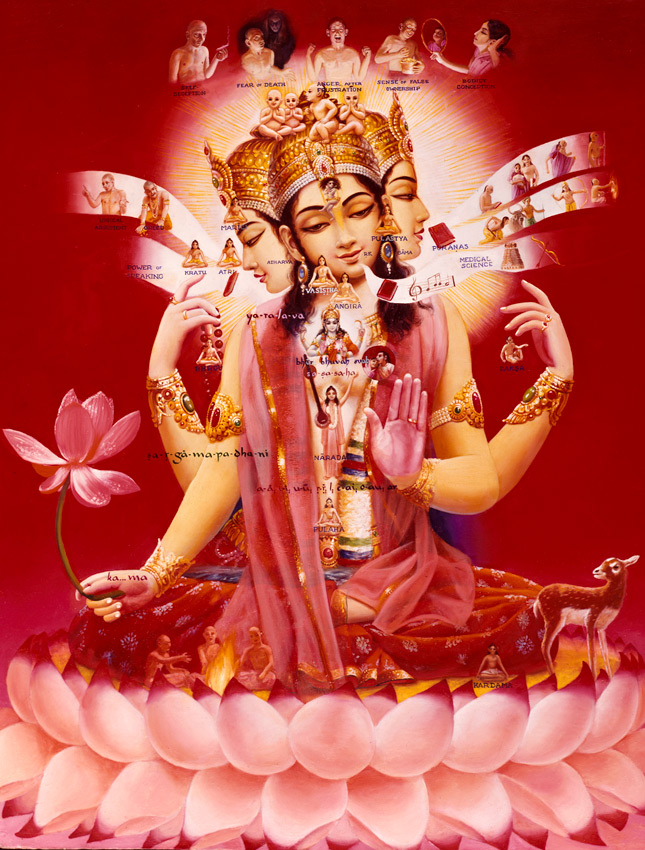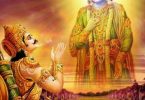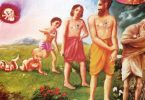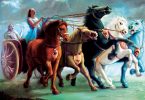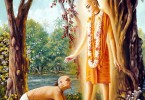Question: I have a several part doubt from SB 3.32.8. Kindly clarify.
(a) Who is Hiranyagarbha?
Answer by Romapada Swami:
There are 4 distinct meanings of “Who Hiranyagarbha is”.
See SB 3.8.15 purport for 3 meanings {“the gross viräö form, the subtle Hiraëyagarbha and the material creative force, Brahmä”}. The “virat” meaning is also found in SB 2.2.28 and 2.5.34-35. BG 10.6 purport provides a clear example of Lord Brahmä being identified by the name Hiranyagarbha.
___
{NOTE: Srila Bhaktisiddhanta Sarasvati Thakur provides a meaning of “the subtle Hiraëyagarbha” in his commentary to Sri Brahma Samhita 5.22 as follows:
The divine lotus which springs from the navel-pit of Viñëu is in every way related by the spiritual tie with all souls and is the origin of four-faced Brahmä versed in the four Vedas.
PURPORT
The same divine lotus originating from the divine person entered into the hidden recess, is the superior plane of aggregation of all individual souls. The four-faced Brahmä, the image of self-enjoyment, derives his origin from the prototype Brahmä or Hiraëyagarbha, the mundane seminal principle, who regards the aggregate of all mundane entities as his own proper body. The delegated godship of Brahmä as well as his being the dislocated portion of Kåñëa, are also established.}
___
The 4th meaning of Hiranyagarbha as Lord Viñëu is found abundantly in Srimad Bhagavatam.
(b) Does Hiranyagarbha refer to Garbodhakasayi Viñëu or to Brahma?
Answer by Romapada Swami:
Hiranyagarbha can indicate any one of the options mentioned above, depending upon the context. In this purport, Srila Prabhupada clearly indicates that in 3.32.8, Hiranyagarbha is referring to Gabhodaksayi Viñëu.
(c) When a qualified living entity is not available, the Lord Himself becomes Brahma. Is this why Brahma is sometimes called Hiranyagarbha?
Answer by Romapada Swami:: Rarely this happens, but sometimes. When Hiranyagarbha is meant to indicate Brahma, however, it simply refers to “the 4-faced Brahma”. See, for example, BG 10.6 purport: “Brahmä is the original creature born out of the energy of the Supreme Lord, who is known as Hiraëyagarbha.”
(d) Why is it that the worshipers of Garbodhakasayi Viñëu stay in Brahmaloka until the end of Brahma’s life before they go to spiritual kingdom?
Answer by Romapada Swami: See Viswanath Chakravarti Thakur (VCT)’s commentary to this verse, found in dark red letters below. The reason is clear.
(e) Garbodhakasayi Viñëu is Viñëu tattva. Why can’t the worshipers go to Vaikuntha after they leave their bodies?
Answer by Romapada Swami:: This is also explained in VCT’s commentary.
.. SB 3.32.8
VCT
Verse Translation: “They remain on Satyaloka meditating on Brahmä until the end of Brahmä’s life of two parärdhas.”
VCT Commentary: Brahmä is just a guëävatära of the Supreme Lord. The worshippers of Hiraëyagarbha by bhakti-miçra-jïäna gradually attain liberation along with Brahmä. Småti says:
brahmaëä saha te sarve sampräpte pratisaïcare
parasyänte kåtätmänaù praviçanti paraà padam
“Those who are on Brahma-loka with exalted status at the time of dissolution go directly to the supreme abode, along with Lord Brahmä.” Kürma Puräëa 1.11.284
However, if they worship only Hiraëyagarbha without bhakti for Viñëu, then they do not attain liberation when Brahmä is liberated. That is explained in three verses. Loka refers to Brahmaloka. They meditate on Brahmä (parasya).

